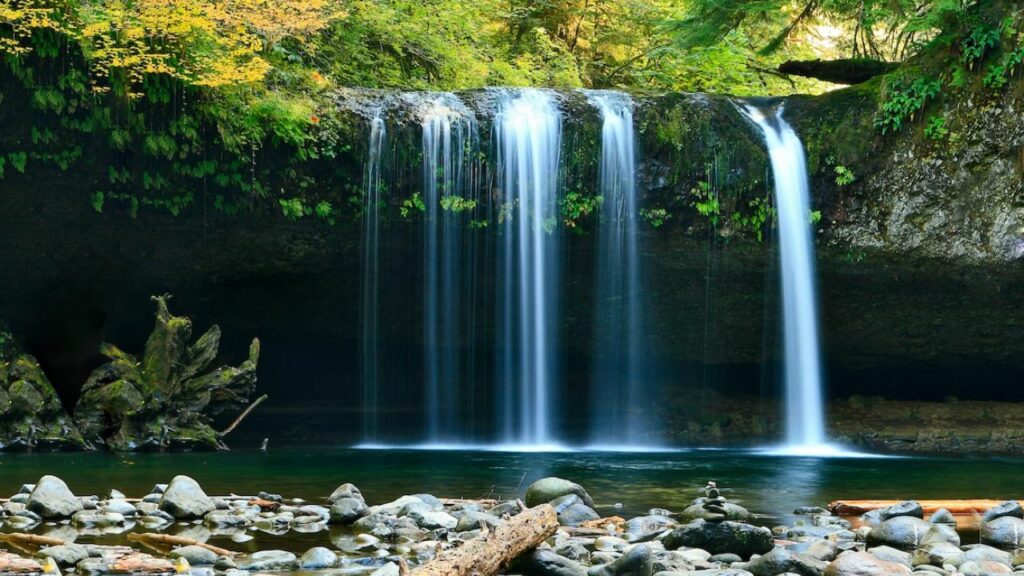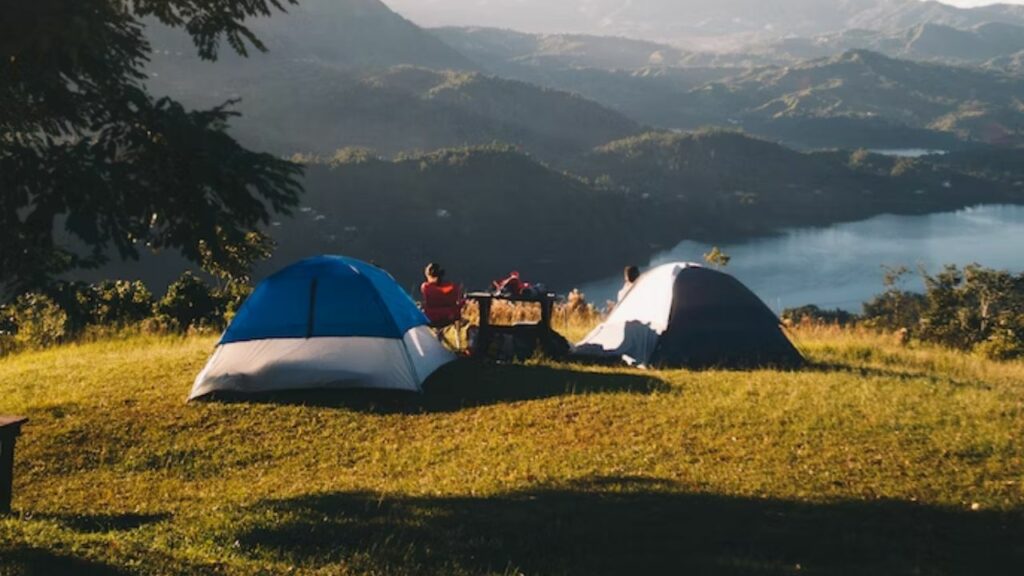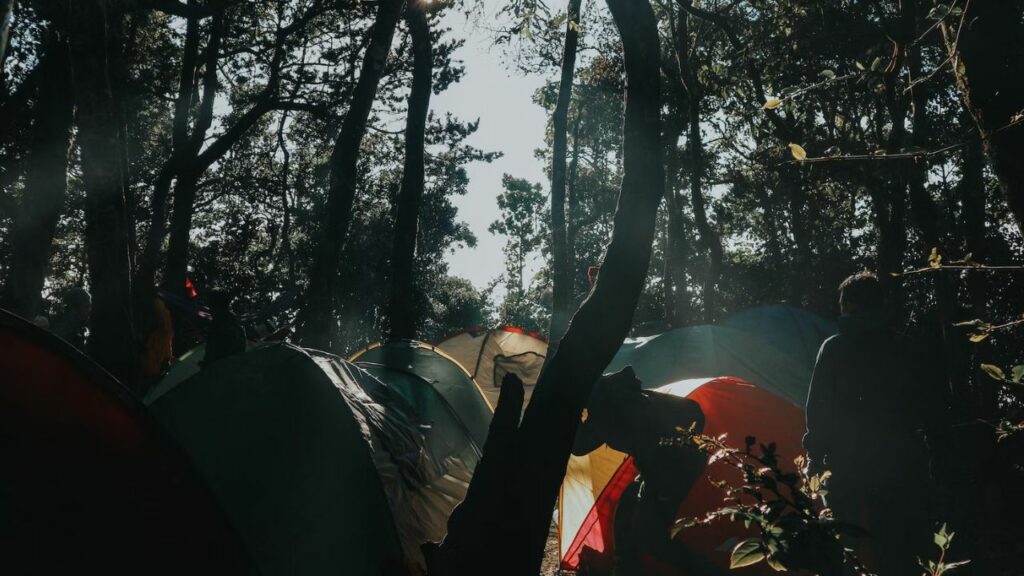Don’t assume that personal hygiene takes a backseat when embarking on a camping adventure. Staying clean and refreshed is essential for your overall well-being and enjoyment of the camping experience.
Whether spending a weekend in the wilderness or going on an extended camping trip, finding a suitable showering solution is key. In this article, I’ll explore various options and techniques for showering when camping, so you can feel clean and rejuvenated even in the heart of nature.
When camping, you can take a natural bath for a quick rinse. Otherwise, bring extra water and biodegradable soap to bathe 200 feet away from water sources. Use public showers if available, or try a portable solar camp shower. In the absence of these options, take a sponge bath, use baby wipes, or dry shampoo to freshen up.
From portable showers to natural water sources and DIY solutions, plenty of options suit different camping styles and preferences. And we’ll check out all of them to identify what suits you the best.
Showering Options for Campers
Don’t worry. I won’t tell you you can use your RV’s indoor or outdoor shower. You’re obviously here for tent camping, right?
1. Portable Showers
Portable showers are easily the most popular choice among campers as they offer convenience and flexibility.
- Solar-Powered Showers: These showers contain a water reservoir and a black bag that warms the water inside. Solar showers are easy to use and environmentally friendly.
- Propane-Powered Showers: They typically come with a burner or heating element that warms the water as it passes through. These provide instant hot water, ideal for those who prefer a warm shower.
- Manual Pressurized Showers: They use hand pumping or pressurization mechanisms to create water pressure. Speaking from experience, they’re good but a bit of a hassle.
Purchase Options for Solar-Powered Showers
- Buy Advanced Elements Summer Shower on Amazon
- Buy NEMO Helio Portable Shower on REI
- Buy NEMO Helio Portable Shower on Amazon
- Buy NEMO Helio Portable Shower on Backcountry
Purchase Options for Propane-Powered Showers
- Buy Hike Crew Portable Propane Water Heater and Shower on Amazon
- Buy Camplux Tankless Water Heater on Amazon
Purchase Options for Pressurized Showers
2. Public Showers at Regulated Campsites
Many campgrounds and recreational areas provide public shower facilities for campers to use. These facilities usually have designated shower stalls, often requiring a small fee for usage.
Bringing your toiletries and towels is a good idea when using public showers. Be prepared for limited privacy and time restrictions, especially during peak camping seasons. Or you could wake up super early and use the shower at a less-crowded time.
3. Dry Shampoo
Dry shampoo can be a lifesaver when you cannot shower or have access to water. Using this, you can clean your hair without water or traditional shampooing.
To use dry shampoo, simply spray or apply it to your hair, focusing on the roots, and massage it. Let it sit for a few minutes, and then brush or comb your hair to remove any residue.
Buy Act+ ACRE Dry Shampoo on Amazon (Ideal for Campers)
Note: Dry shampoo isn’t a substitute for regular hair washing but is sometimes helpful.
4. Natural Showers: Lakes and Waterfalls

For campers who enjoy immersing themselves in nature, going all-natural using lakes and waterfalls as makeshift showers can be an exhilarating experience. This option allows you to merge the joy of bathing with the beauty of natural surroundings.
However, it’s important to follow certain guidelines and consider environmental impact:
- Before using natural water sources for showering, ensure that it is permitted in the area you’re camping.
- When using natural water sources, practicing Leave No Trace principles is crucial.
- Be mindful of other campers and respect their privacy while using shared water sources.
5. Take a Quick Sponge Bath
When a full shower is not feasible or time is limited, a quick sponge bath can help you freshen up. They’re a practical solution for conserving water while maintaining personal hygiene.
To take a sponge bath, carry a small basin or bucket filled with water and use it with a biodegradable soap or body wash. Remember to rinse the sponge or washcloth frequently and properly dispose of the used water.
How often should you shower at a campsite?
Generally, you must shower at least every two to three days to maintain personal hygiene and cleanliness when camping outdoors. However, the frequency can vary depending on your preferences, your camping trip’s duration, and showering facilities’ availability.
1. How to shower at a campsite?
Now that you have your shower area prepared and water temperature sorted, here’s a step-by-step guide to help you make the most of your camping shower:
Step 1: Wet Your Body
Start by wetting your body thoroughly to prepare for cleansing. Use a handheld showerhead, a water bottle with holes punched in the cap, or any other showering device you have set up.
Step 2: Apply Soap and Shampoo
Once your body is wet, apply soap or shampoo as needed. Use biodegradable products to minimize environmental impact, especially when showering near natural water sources.
Step 3: Rinse Off
After lathering up, rinse off the soap and shampoo thoroughly. Ensure that all soap residue is removed from your body to maintain cleanliness and minimize the risk of skin irritation.
Step 4: Dry Off
Pat yourself dry with a towel or use a microfiber towel that dries quickly and efficiently. If you’re camping in a warm and sunny location, allow your body to air dry naturally.

2. How do you deal with not showering while camping?
There are several ways to maintain personal hygiene when camping without access to showers.
You can use wet or biodegradable camping wipes to clean your body, focusing on areas that tend to get sweaty or dirty. Additionally, changing into clean clothes and using deodorant can help you feel refreshed. Practicing good oral hygiene by brushing your teeth regularly is also important.
Remember, while camping, embracing the natural environment and accepting some dirtiness is part of the experience.
How to make a portable shower for camping?
If you’re interested in a DIY approach or want to save money on purchasing a portable camping shower, you can create your own shower setup using common camping equipment.
1. Bucket Shower:
You only need a large bucket or container with a handle, a waterproof shower curtain or tarp, and a showerhead attachment.
Fill the bucket with water, hang the shower curtain or tarp from a tree branch or a makeshift structure, and attach the showerhead to the bottom. And voila!
2. Gravity-Fed Shower
You’ll need a water container or reservoir placed at an elevated position, such as a tree limb or a sturdy stand, and a showerhead attached to a hose at the bottom.
Fill the reservoir with water and let gravity do its thing.
3. Other Improvised Shower Setups
Depending on the available resources, you can create an improvised shower using items like a watering can, garden sprayer, or even a large water bottle with holes punched in the cap.
When setting up a DIY portable shower, consider the following tips:
- Choose a location with proper drainage to avoid creating a muddy mess.
- Use biodegradable soaps and shampoos to minimize environmental impact.
- Test your DIY shower setup before your trip to ensure it functions properly.
- Be mindful of water usage and conserve water whenever possible.
Explore some showering techniques and tips to enhance your camping shower experience.
How to prepare the shower area at the campsite?

Step 1: Clear the Ground
Remove debris, rocks, or twigs from the shower area.
Step 2: Lay Down a Mat or Tarp
It’ll provide a clean surface and prevent muddy or sandy conditions.
Step 3: Ensure Proper Drainage
If your camping area doesn’t have a natural drainage system, create a small trench or use a portable shower tray to direct the water away from the shower area.
Frequently Asked Questions (FAQs)
1. Can I use regular shampoo and soap while camping?
Technically, you can use regular shampoo and soap while camping. However, it’s important to consider the environmental impact and choose biodegradable options to minimize harm to natural water sources.
2. Are there any camping areas with built-in showers?
Some campgrounds and RV parks provide shower facilities for campers. These facilities may require a fee or be included in the camping fee. It’s recommended to check the amenities offered by the camping area you plan to visit.
3. Can I use natural water sources for showering?
Showering in natural water sources like lakes and rivers is possible but may be subject to local regulations and environmental considerations. Always check with park authorities or campground management regarding any restrictions or guidelines.
4. What are some alternative hygiene methods for camping?
If a shower is not available or practical, alternative hygiene methods include using wet wipes, dry shampoo, and hand sanitizers. These products can help freshen up and maintain cleanliness when traditional showering is not an option.
5. How to conserve water while showering in a camping setting?
Water conservation is important while camping. You can minimize water usage by using low-flow showerheads, turning off the water while lathering, and taking quick showers. Additionally, consider using water collected from natural sources or carrying water from home to minimize waste.

